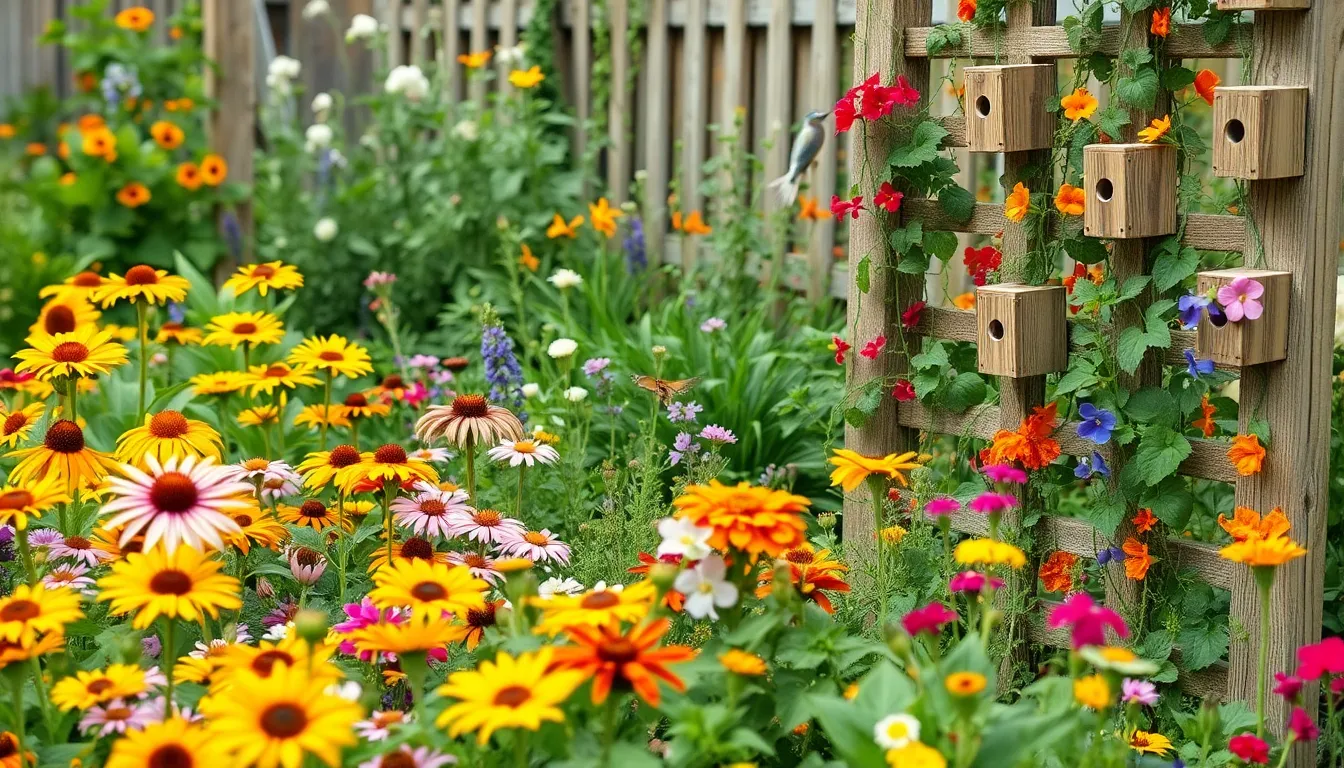Imagine stepping into a garden buzzing with life, where butterflies dance from bloom to bloom and bees hum softly as they gather nectar. Designing a pollinator garden is more than just a delightful way to beautify your space—it’s a vital contribution to supporting our ecosystem’s hardworking pollinators. Whether you’re just starting out or have a seasoned green thumb, creating a haven for pollinators offers a rewarding gardening experience that connects you with nature’s intricate web.
Pollinators play a crucial role in the health of our environment, aiding in the reproduction of more than 80% of the world’s flowering plants. By learning how to design a pollinator garden, you’ll not only enhance your outdoor space but also support biodiversity and help combat declining pollinator populations. In this article, we’ll guide you through selecting the best plant varieties, planning layouts that attract a diverse range of pollinators, and incorporating sustainable practices to keep your garden thriving.
From understanding the specific needs of bees, butterflies, and birds to choosing blooms that ensure a year-round feast, designing a pollinator garden is an exciting journey. You’ll discover how to create habitats that provide shelter, food, and water, making your garden a sanctuary for these essential creatures. Get ready to dig in and cultivate an enchanting space that not only brings joy to your senses but also plays a pivotal role in nurturing our planet’s health.
Select Native Pollinator Plants
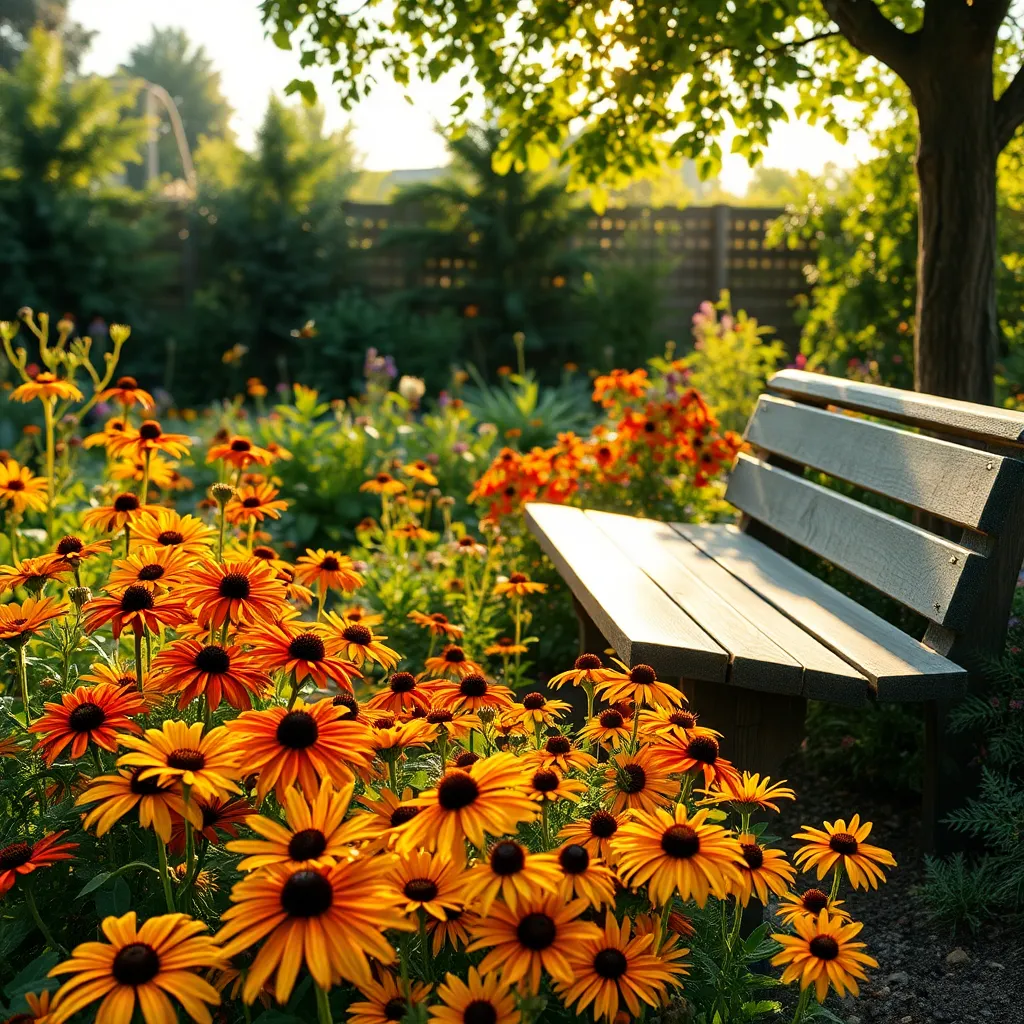
Choosing native pollinator plants is essential for creating a thriving garden ecosystem. Native plants are well-adapted to your local climate and soil conditions, making them low-maintenance and resilient.
Consider planting a mix of perennials and annuals to provide year-round interest and support for pollinators. Perennials such as milkweed, coneflower, and bee balm are excellent choices due to their long blooming periods and attractiveness to bees and butterflies.
To ensure your plants thrive, match each species to its preferred growing conditions, such as soil type and sun exposure. For instance, milkweed thrives in well-drained soil and full sun, while bee balm prefers moist, rich soil and partial shade.
Watering needs can vary significantly between native plants, so it’s vital to group plants with similar requirements together. Most native perennials are drought-tolerant once established, but they may need regular watering during their first growing season.
For advanced gardeners, consider incorporating native grasses like little bluestem to add texture and support beneficial insects. These grasses also provide excellent winter habitat for pollinators and add year-round visual interest to your garden.
Plan Diverse Blooming Seasons
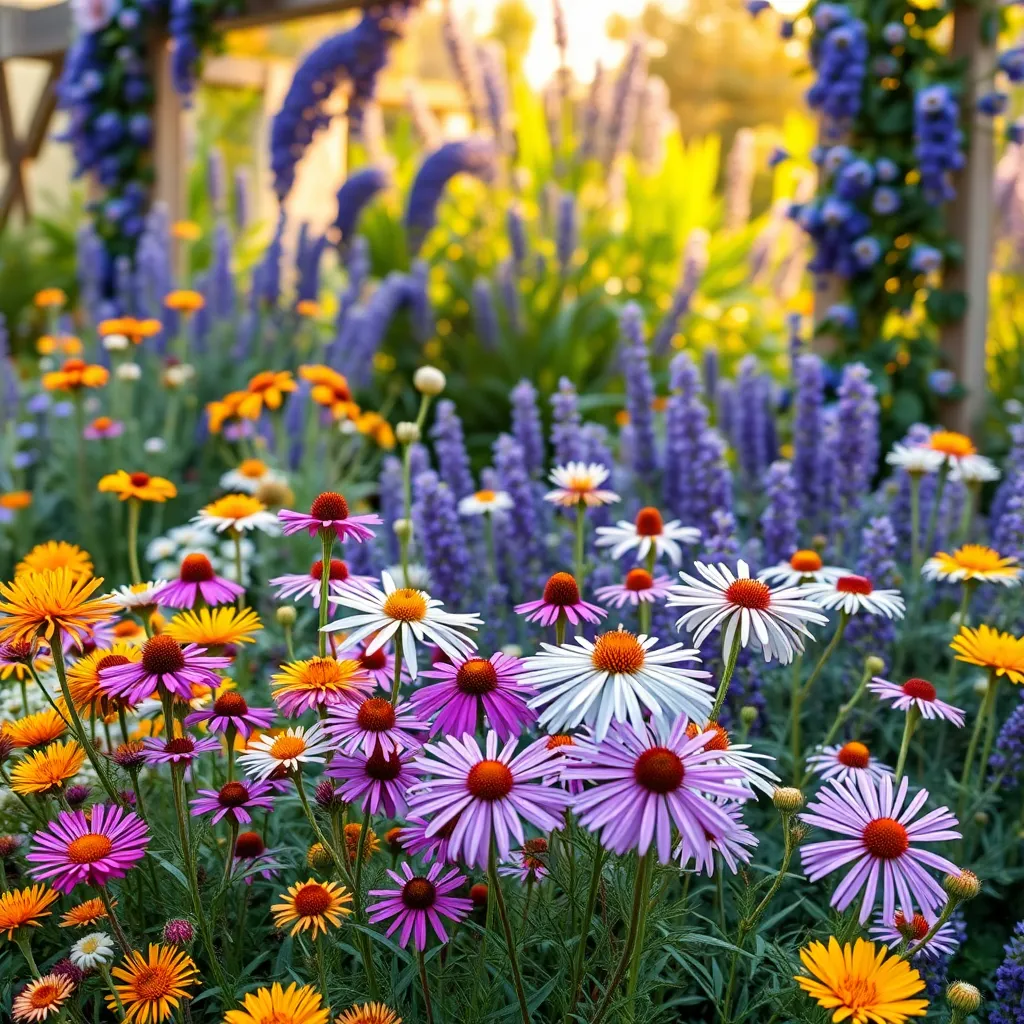
To create a vibrant pollinator garden, focus on planning diverse blooming seasons. This ensures that there are always flowers available for pollinators throughout the year, providing a consistent food source.
Begin by selecting plants that bloom at different times of the year. For instance, choose spring bloomers like crocuses and tulips, summer flowers such as coneflowers and lavender, and fall beauties like asters and goldenrods.
Consider the specific growing conditions of your garden, including soil type and sunlight. Choose plants that thrive in your garden’s conditions to ensure robust growth and extended blooming periods.
For a more advanced approach, interplant species that have different blooming cycles. This not only maximizes your space but also creates a layered effect that attracts a wider variety of pollinators.
Regularly deadhead spent blooms to encourage more flowers, extending the blooming season. Additionally, apply a balanced fertilizer in early spring to support vigorous growth and healthy blooms.
- Check soil pH and adjust accordingly for optimal plant health.
- Water deeply but infrequently to promote deep root systems.
- Use mulch to retain moisture and suppress weeds around your plants.
Create Shelter and Habitat
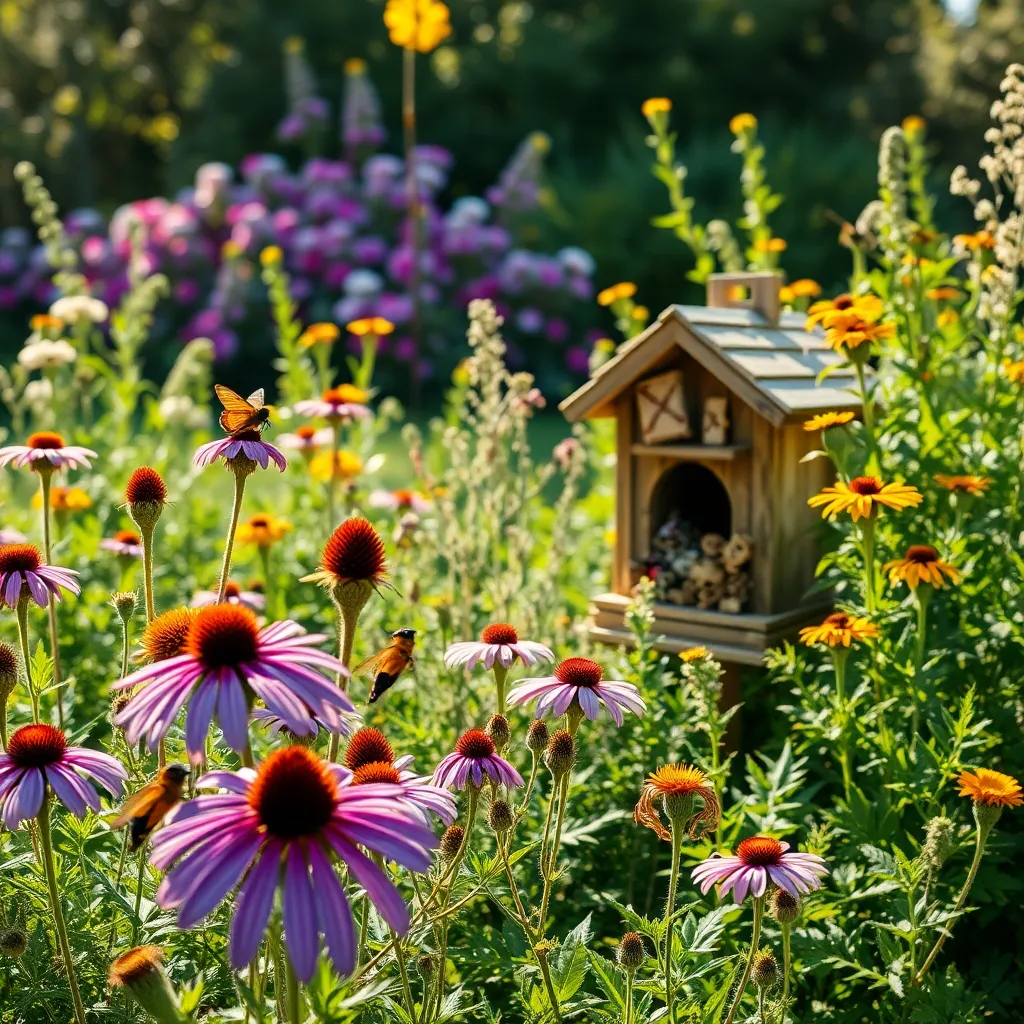
To create a thriving pollinator garden, it’s essential to incorporate shelter and habitat for your pollinators. Consider using a mix of dense shrubs and trees to offer protection from the elements and predators.
Planting native grasses and perennials can provide critical nesting sites for many pollinators. Ensure these plants are left undisturbed during their dormant seasons, allowing insects to safely overwinter.
Include a variety of plant heights and structures to accommodate different species’ needs. For instance, tall flowering plants can offer shelter for butterflies, while ground cover plants provide hiding spots for smaller insects.
For those ready to enhance their gardens further, consider installing bee hotels or nesting boxes. These structures can be easily crafted from bamboo, wood, or even recycled materials, and they offer solitary bees a safe place to lay eggs.
Water sources are vital, too. A shallow dish with stones allows pollinators to drink safely without drowning, maintaining hydration on hot days.
By combining these elements, you’re not only designing a beautiful garden but also creating a sustainable ecosystem. Your efforts will yield a vibrant, buzzing habitat that supports pollinator populations year-round.
Incorporate Water Sources
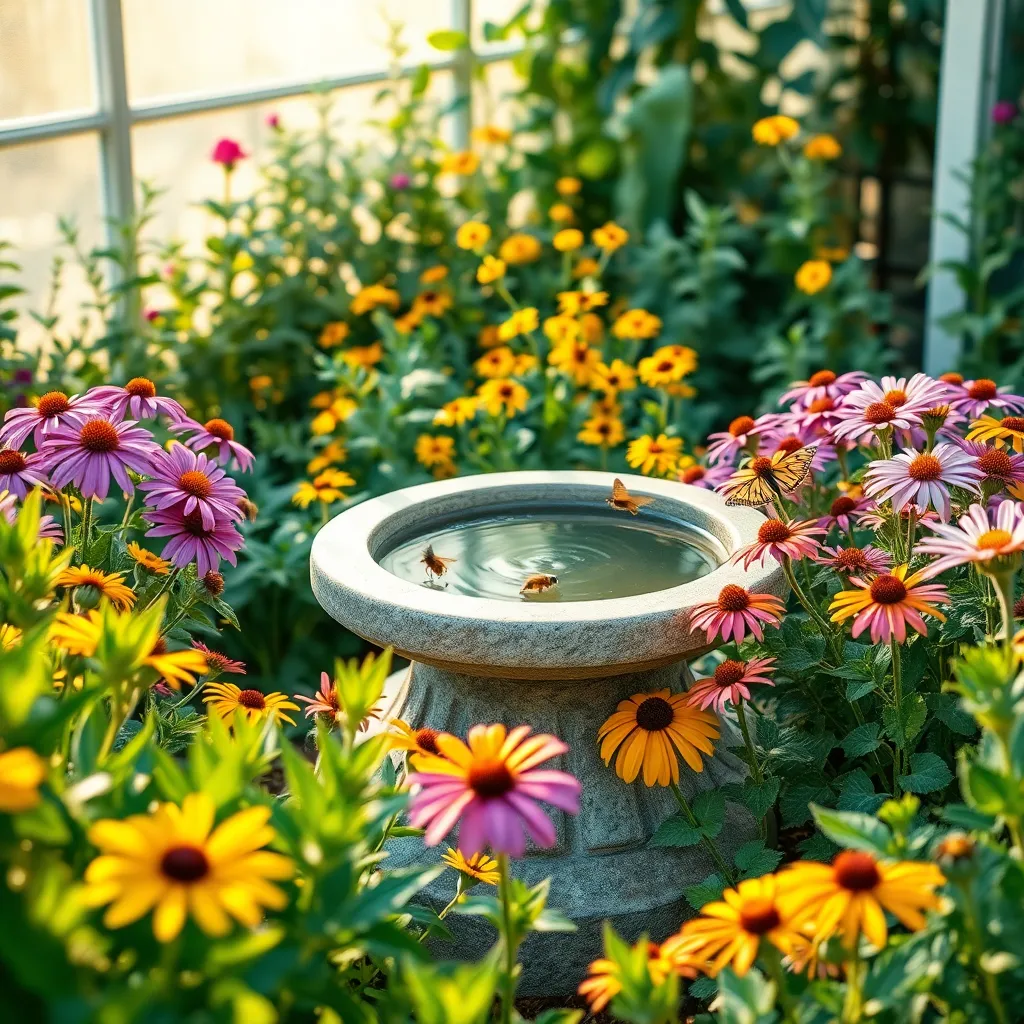
Adding water sources to your pollinator garden can greatly enhance its attractiveness to bees, butterflies, and other beneficial insects. Even a simple birdbath or shallow dish filled with water can provide much-needed hydration for these creatures.
Consider placing flat stones in the water source to give pollinators a safe landing spot. This setup allows them to drink without the risk of drowning, which is particularly important for small insects.
It’s essential to keep the water sources clean and fresh to prevent the growth of algae and mosquitoes. Change the water every few days and scrub the container periodically to maintain a healthy environment.
For a more advanced setup, you might consider installing a small pond or water feature. This not only adds an aesthetic element to your garden but also supports a wider variety of wildlife.
Avoid Pesticides and Chemicals
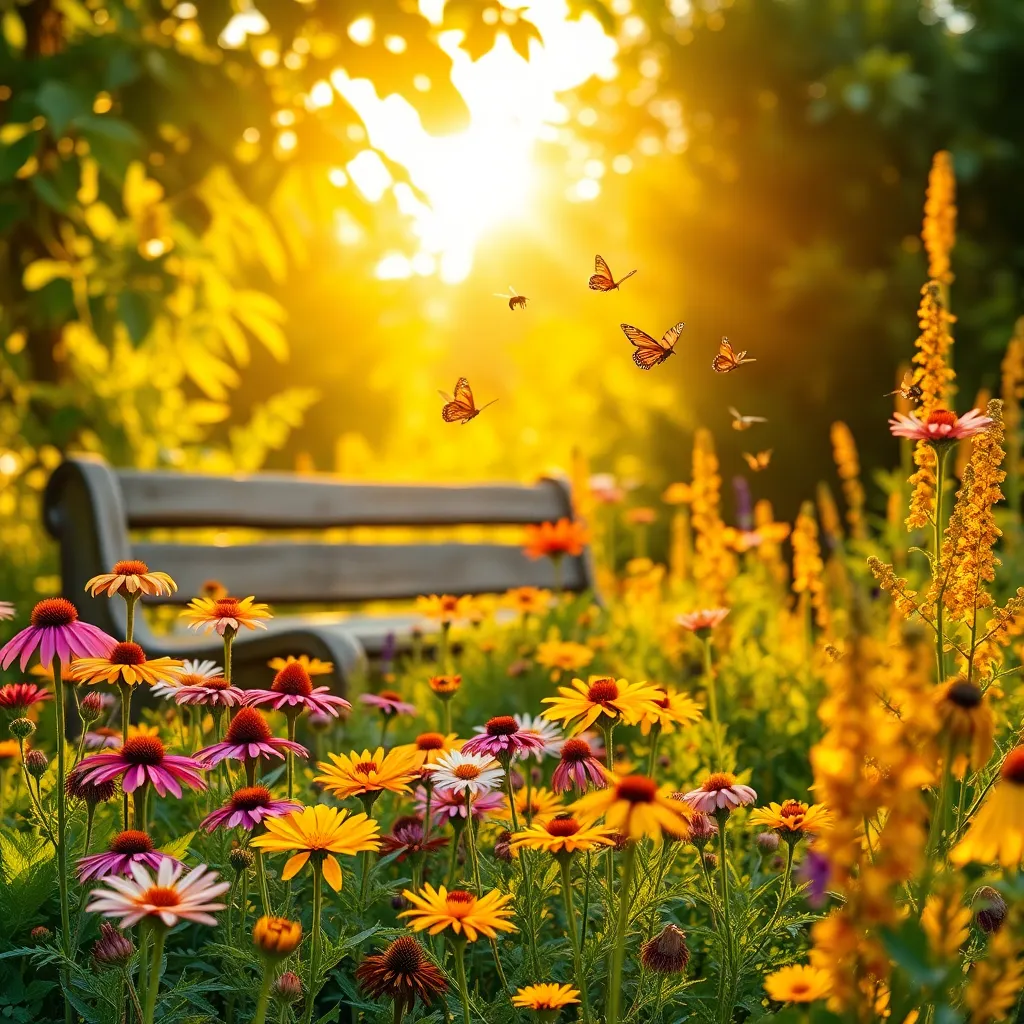
Avoiding pesticides and chemicals is essential for nurturing a thriving pollinator garden. By doing so, you protect the delicate ecosystems that pollinators depend on, fostering a healthier environment for bees, butterflies, and other beneficial insects.
Instead of chemical solutions, adopt natural pest control methods to keep your garden healthy. Introducing beneficial insects like ladybugs and lacewings can help manage pests organically, offering a natural balance without harming pollinators.
Companion planting is another effective strategy that can deter pests naturally. Planting aromatic herbs such as basil or mint alongside your flowers can repel unwanted insects, while attracting pollinators with their blooms.
Maintaining healthy soil is vital to reducing pest problems, as strong plants are more resilient to infestations. Regularly amend your soil with organic compost to boost plant health, ensuring your garden remains a welcoming habitat for pollinators.
Conclusion: Growing Success with These Plants
As we wrap up our exploration of creating a pollinator garden, remember the five key relationship concepts: understanding the needs of your garden’s inhabitants, fostering diversity to strengthen your ecosystem, maintaining balance through consistent care, nurturing growth with patience, and celebrating the beauty of collaboration. Each of these principles mirrors the nurturing of human relationships, reminding us of the beauty and strength found in diversity and mutual support.
Now, take a tangible step towards cultivating both your garden and personal connections by planning a garden day with a loved one. Use this time to plant seeds together—both literal and metaphorical—and watch how your shared efforts cultivate growth and understanding.
Don’t let these insights slip away. Bookmark this article as a handy reference to guide your gardening and relationship journeys alike. By doing so, you’ll have a resource that continuously inspires and empowers you to nurture your bonds with intention.
As you embark on this enriching journey, remember: the seeds you plant today—whether in soil or in your relationships—can blossom into a future filled with thriving, vibrant connections. Embrace the growth, and watch your efforts flourish.

